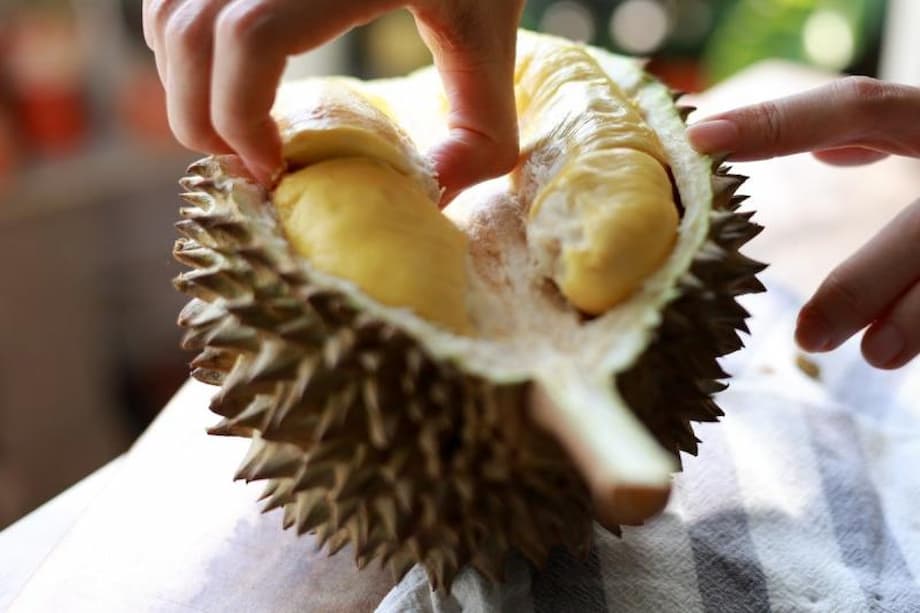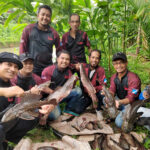Why fast fruit still matters in China today
China is building a new fast lane for fruit. In August, the operator of Dalian’s sea terminal began work on the Dalian Northeast Asia Fruit Transit Centre and launched a durian express service meant to cut sailing times from Southeast Asia by about half. The plan is to move vast volumes of the spiky fruit straight into the country’s northeast, a region of roughly 100 million people that sits far from the usual southern gateways. The project, which could process up to 10,000 containers of durians a year, targets a simple promise that matters to buyers and sellers alike: fresher fruit, delivered faster, at lower loss.
This modern push for speed echoes a famous story from China’s past. During the Tang dynasty, imperial couriers rushed fresh lychees to the capital to please Yang Guifei, the beloved consort of Emperor Xuanzong. Horses and riders dashed north in relays, carrying a delicate fruit that spoils within days. Today, refrigerated vessels, container yards, and trucks form a different kind of relay. The goal is the same, to satisfy a distant appetite within a tight freshness window.
The stakes are high. Chinese demand for durian has surged in recent years. The country has become the world’s largest durian market, fueled by social media buzz, live commerce, and a taste for premium tropical produce. Most imports enter through southern ports such as Guangzhou and Shenzhen, then travel long distances to reach the north. Time costs flavor. The Dalian hub aims to shrink the journey and keep more fruit in prime condition by the time it hits store shelves in Liaoning, Jilin, Heilongjiang, and Inner Mongolia.
Inside the durian express project
The new center in Dalian is designed to work as a one stop node for imported fruit. It combines cold storage, inspection, customs clearance, and distribution under one roof. By anchoring direct sea services from Southeast Asian ports and cutting transshipment, the durian express intends to shave days off the voyage. For a fruit that ripens quickly and travels best with careful temperature and airflow control, that time saving can decide whether a container sells out at a premium or ends up discounted and bruised.
Once discharged in Dalian, shipments can spread across northeast cities by rail and road with minimal handoffs. That can trim handling damage and reduce the loss that comes from temperature swings at each transfer. The operator’s target, up to 10,000 containers a year, signals a major bet on durian appetite beyond the country’s coastal south. It also suggests the hub will act as a platform for other Southeast Asian fruits in season, from mangosteen to longan, especially if those can share storage and inspection capacity.
Cold chain basics for a tricky fruit
Durian is an unforgiving traveler. Once harvested, it produces gases that hasten ripening, and its flesh softens fast. Fresh shipments need steady temperatures and ventilation tailored to the cultivar and stage of maturity. Too warm, and quality slides. Too cold, and the fruit suffers chilling injury. Many containers move as frozen pulp, which is easier to ship and store, but fans prize the fragrance and texture of fresh durian that has ripened in transit without crossing into mush. Shorter sea time, fewer handovers, and immediate entry into regional distribution improve the odds that the fruit arrives at that sweet spot.
The science and culture behind durian taste
Few fruits split opinion like durian. Its powerful aroma comes from volatile sulfur compounds, a family of molecules that the human nose reads in very different ways. Genetics plays a role. Variations in olfactory receptors affect how intensely a person detects either the creamy sweetness or the pungent notes that others liken to strong cheese. That is why a flavor adored in one family can send another to the other side of the room.
Culture shapes reactions as well. Across Southeast Asia, many people grow up with durian as a festive treat, sold at roadside stalls and celebrated in regional cuisines. In China, the fruit’s rise has followed a different path. It arrived first as an expensive import from Thailand, then gained momentum as Vietnamese orchards won market access for fresh shipments in 2022 and Filipino growers followed in 2023. Price signaled prestige, and online tastings turned curiosity into desire. With faster delivery into the northeast, more shoppers will encounter durian at better quality tiers, which can turn a single trial into a repeat purchase.
Durian’s cultural meaning is complex. It is a delicacy in one setting, a nuisance in another. Hotels and transit systems in several cities ban it because the smell lingers. That tension, desire on the plate and aversion in public space, is part of what makes the fruit a symbol in films, poems, and essays about memory and taste. The new logistics push does not settle that debate. It simply moves the fruit closer to people who want to decide for themselves.
A Tang dynasty precedent: lychees for Yang Guifei
Centuries before refrigerated cargo, the tangiest fruit story in China was the race to deliver lychees to the imperial court. The tale tells of Emperor Xuanzong’s favorite, Yang Guifei, who adored lychees, a seasonal fruit with thin skin and delicate flesh that turn quickly once picked. Couriers on fast horses carried the fruit to Chang’an, the capital, using a chain of relay stations. Each station provided fresh mounts and riders so the cargo could fly north in days rather than weeks. The shipments projected the court’s reach, and they also cost a fortune.
Where those lychees came from remains a matter of scholarship. Many assume the fruit traveled from Lingnan, the subtropical belt that covers today’s Guangdong, Guangxi, and Hainan. The distance to the capital would have required roughly a week of relentless riding in summer, right at the edge of the fruit’s freshness window. Other records point to sources closer to the capital, including Fuzhou to the east or even areas later known as Fuling. A three day run from a nearer orchard would have made success more likely.
Couriers used ingenuity to fight the clock. Lychees were sometimes shipped still attached to branches, or with sprigs grafted into banana stalks that retained moisture. Some accounts even describe potted trees traveling part of the route so the fruit could ripen just before arrival. The details blur across centuries, but the purpose is clear. The system valued speed, manpower, and tight organization to keep a fragile luxury intact.
What the couriers tell us
The relay for lychees became a parable of desire, logistics, and state power. It showed that command could turn distance into spectacle. Later generations remembered the shipments as an emblem of excess, a luxury that distracted the court as troubles mounted. Whether the fruit came from Guangdong or a nearer grove matters less than what the story reveals. When taste at the center calls for something that grows far away, states and merchants build networks to close the gap.
Parallels and differences between horses and container ships
The goal has not changed. Move a delicate fruit across long distances fast enough to preserve flavor, and do it at a cost the buyer will accept. In the Tang era, the customer was a single palace. In today’s China, the customers are millions of families scattered across provinces and city tiers. Speed is still a currency. Freshness still wins the sale.
Scale and technology have transformed how that goal is met. The ancient lychee relays likely carried small loads at immense unit cost. Modern shipping moves thousands of tons each month, divided among reefer containers with precise controls for temperature, venting, and humidity. The Dalian hub concentrates storage, quarantine, and distribution so that fruit can pass inspection and reach inland markets with minimal delay. Digital tracking aligns port schedules, truck dispatch, and supermarket deliveries, further compressing time in transit.
The social forces behind fruit booms have changed too. Live streaming tastings, short videos, and group buying apps drive waves of demand that move faster than any past courtly fashion. When a durian variety trends online, a port that can turn ships quickly and feed regional warehouses has an advantage. Speed converts viral attention into actual baskets sold before interest moves on to the next seasonal star.
Who benefits and what could go wrong
If the durian express meets its targets, several groups stand to gain. Shoppers in the northeast get fresher fruit with less waste. Retailers and wholesalers can plan promotions around more predictable arrival times. Growers and exporters in Southeast Asia secure another channel to a fast growing region of China, which can support higher pack standards and better prices when quality reaches the top grade. Dalian cements its role as a northern gateway for produce, with spillover benefits for jobs in storage, inspection, and trucking.
Prices may drift lower during peak seasons if shorter journeys cut losses. Better shelf life also widens the assortment, so stores can stock more cultivars and different ripeness levels. That helps move durian from a rare splurge to an occasional treat for many households. Yet price spikes can still appear around holidays, when demand surges and vessel space tightens. Weather in orchards or storms at sea can undo the best laid schedules.
Risks remain. Perishable cargo strains any supply chain. A delay at one port call can roll through the schedule and push fruit past its ideal window. Quality control depends on careful harvest timing and packing at source, plus steady temperatures all the way through to the shop floor. There is also an energy cost. Refrigerated transport and cold storage draw power, so efficiency upgrades and cleaner electricity matter if the industry wants to grow with less environmental burden. Those challenges are real, but they are familiar to every major produce corridor. The novelty in China’s northeast is the focus on speed at scale for a fruit that inspires both loyalty and debate.
Key Points
- Dalian’s new fruit transit center began construction in August and launched a durian express to cut sea time from Southeast Asia
- The hub aims to handle up to 10,000 durian containers a year and feed markets across northeast China
- Northeast consumers have lagged in durian access because most imports enter through southern ports
- Cold chain control and fewer handoffs are meant to deliver better flavor with less waste
- Durian divides opinion because of sulfur compounds and genetic differences in smell perception
- The project invites comparison to Tang era lychee relays that rushed fruit to the imperial court at great cost
- Some scholars place the lychee origin closer to the capital, while others point to Lingnan orchards
- Faster delivery could benefit shoppers, exporters, and the Dalian logistics cluster, while still facing weather, quality, and energy challenges




